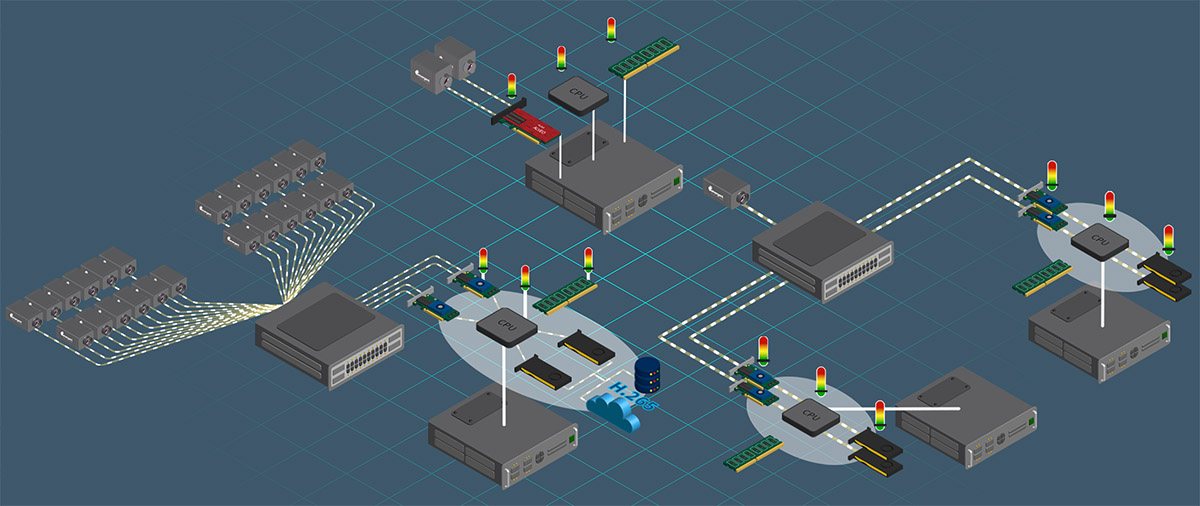Emergent Vision Technologies Inc. yesterday released details of advances in high-speed imaging technologies and how its high-speed GigE Vision cameras and systems for zero data loss can deliver high performance with system simplicity.
The Port Coquitlam, Canada-based company said its on-demand presentation, which originally aired as part of the 2023 Vision Spectra Conference, examines progress in machine vision cameras, network interface cards and other processing technologies, and software.
Founded in 2007, Emergent Vision Technologies claimed that it was the first providers of cameras based on the 10 Gigabit Ethernet (10GigE), 25 Gigabit Ethernet (25GigE), 50 Gigabit Ethernet (50GigE), and 100 Gigabit Ethernet (100GigE) interfaces. The company said its team has experience in machine vision and high-speed imaging, from design to engineering, manufacturing, consulting, and technical support.
Emergent Vision Technologies added that its high-speed cameras are widely used in inspection and automation, sports technology, virtual reality, 3D mapping, traffic, and more.
Emergent Vision explains protocol differences
High-speed inspection today requires cameras capable of handling the required speed and data rates with high reliability and performance, noted Emergent Vision Technologies.
“Even with the machine vision industry’s most popular interface—GigE Vision—differences exist between communications protocols that, when understood, can unlock the next level of performance in high-speed imaging,” it said.
The company's videos explained the differences between a GigE Vision Stream Protocol (GVSP) that uses the user datagram protocol (UDP) approach, as opposed to remote direct memory access (RDMA), RDMA over Converged Ethernet (RoCE), and transmission control protocol (TCP). It also looks at how it can help systems integrators, OEMs, and end users achieve top system performance.
“An optimized GSVP approach can deliver true zero copy image transfer with the lowest latency and jitter, while remaining fully GigE Vision-compliant,” stated John Ilett, founder, chief technology officer, and president of Emergent Vision Technologies. “While the proprietary RDMA/RoCE and TCP options offer some of the benefits of GigE Vision, they rely on flow control and resends, which can impact performance and induce latency and jitter.”
Cameras include processing support
Emergent Vision also delved into processing technologies, including NVIDIA graphics processing units (GPUs), field-programmable gate arrays (FPGAs), and Emergent’s award-winning software and proprietary network interface controllers (NICs). It also discussed how they unlock new capabilities for high-speed imaging, such as zero copy image transfer and GPUDirect.
In addition, the company covered the adoption of 10GigE and beyond and presented new high-speed imaging demonstrations featuring 24- and 48-camera setups. They used eCapture Pro software and GPU Direct.
“In high-speed imaging applications where multiple 10GigE, 25GigE, or 100GigE streams are used, real-time processing will require offload technologies to more suitable processing technologies than just system memory and CPU, which is a point that does not come up often when alternate interface or protocol methods are discussed,” said Ilett.
“By leveraging an optimized, UDP-based GVSP approach, Emergent has dedicated the development of its GigE Vision camera ecosystem to reliably support today’s most challenging high-speed imaging applications,” he added.
Emergent Vision Technologies said it has been shipping 10GigE for more than 10 years, 25GigE for five years, and 100GigE for two years.
Article topics
Email Sign Up


















